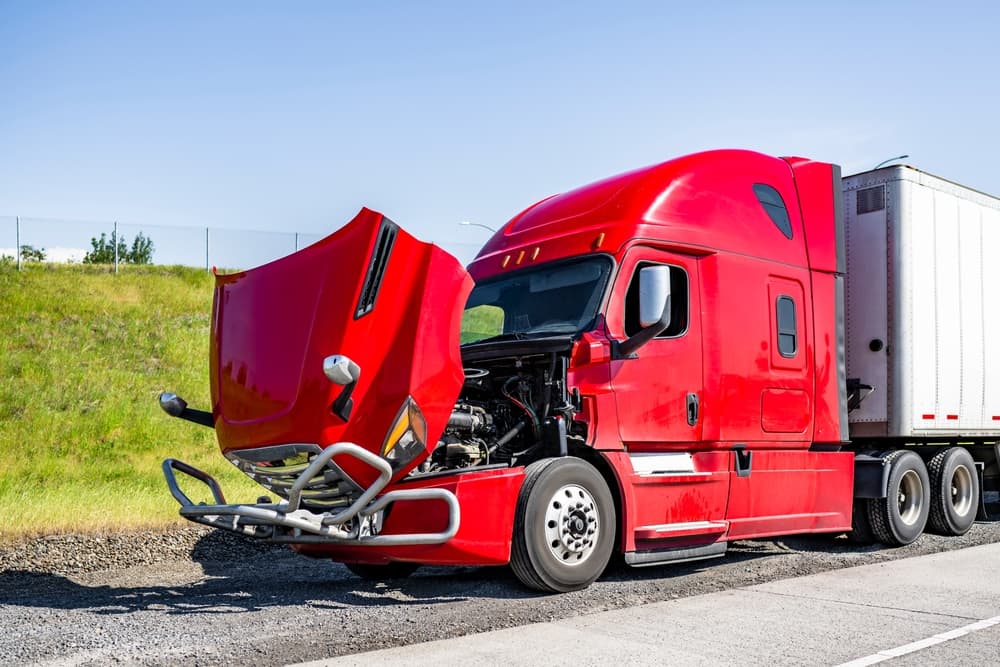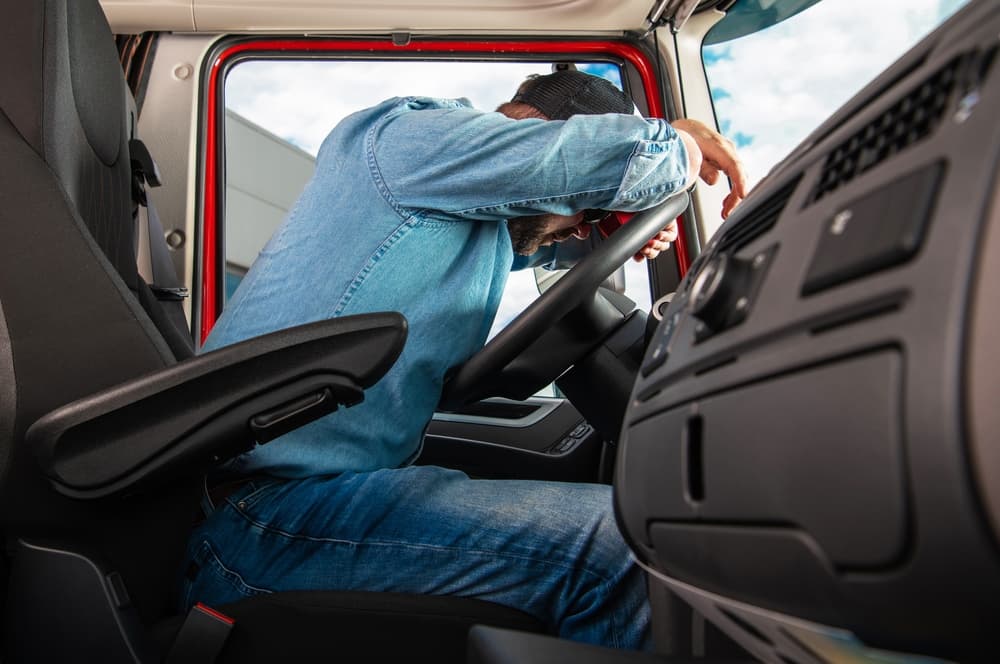Semi-truck drivers and trucking companies cause accidents when they deviate from the established standard of care. Truck drivers have a duty to drive safely and follow all traffic laws. Similarly, trucking companies have a duty to properly maintain their vehicles, load and unload cargo, and follow all motor carrier regulations. When semi-truck drivers and trucking companies are negligent, serious accidents and injuries may result.
As part of a truck collision claim or lawsuit, accident victims may be eligible to receive compensation. In addition to recovering economic damages for their lost earnings or loss of earning capacity, they may also receive compensation for pain and suffering.
Pain and suffering considers the emotional pain and distress that a truck accident victim endures because of their injuries. It can also include compensation for emotional anguish, inconvenience, mental distress, lost quality of life, loss of the ability to use a body part, and loss of spousal companionship or consortium.
A skilled truck accident lawyer can file a timely claim or lawsuit in your case and pursue the compensation you deserve – including compensation for your pain and suffering.
How Do Semi-truck Drivers Cause Accidents?

Semi-truck drivers can cause accidents due to negligence in several ways. These accidents often happen when drivers fail to follow traffic laws or make poor decisions on the road. Negligence by truck drivers can result in serious accidents that affect both other drivers and pedestrians, especially because trucks are large and difficult to stop quickly.
- One common cause of accidents is distracted driving. Cell phones, GPS systems, or even eating and drinking while behind the wheel can all distract semi-truck drivers. Taking their eyes off the road for even a few seconds can lead to rear-end collisions, side-swipes, or drifting into another lane. Given the size and weight of semi-trucks, these types of accidents can cause severe injuries or death.
- Another factor is fatigue. Truck drivers are often required to drive long distances over extended periods. Even though there are rules that limit how many hours a truck driver can work without rest, some drivers ignore these regulations and push themselves to the limit. When a driver is tired, their reaction times slow, and they may make poor decisions like misjudging the distance between vehicles, which can result in accidents such as jackknifing, where the trailer swings out from the truck in an uncontrolled manner, blocking several lanes of traffic.
- Speeding is another form of negligence that causes accidents. Semi-trucks are much harder to control at high speeds, and stopping quickly becomes nearly impossible. If a truck driver is going too fast, they may be unable to stop in time to avoid a collision, particularly in bad weather or heavy traffic, leading to multi-vehicle pileups, which are extremely dangerous for everyone involved.
- Improper lane changes are also a major problem. Semi-trucks have large blind spots, and if a driver fails to check these areas before changing lanes, they may crash into another vehicle, causing a sideswipe or forcing the car off the road.
- Finally, tailgating occurs when a truck driver follows another vehicle too closely. This type of negligence can result in rear-end accidents if the car in front slows down or stops.
How Do Trucking Companies Cause Semi-truck Accidents?

Trucking companies play a significant role in ensuring the safety of their drivers and other road users, but when they act negligently, they can cause serious crashes involving semi-trucks. This negligence often comes from improper hiring practices, poor vehicle maintenance, or placing unreasonable demands on drivers.
- One of the most common ways trucking companies cause collisions is by hiring unqualified or inexperienced drivers. Semi-trucks are large, heavy vehicles that require special skills to operate safely. Companies may rush to hire drivers without thoroughly checking their backgrounds, experience, or certifications. When an unqualified driver is behind the wheel, they may not know how to handle certain situations, such as driving in bad weather or responding to sudden traffic changes. Their inexperience can lead to serious accidents like jackknifing, overturns, or collisions with smaller vehicles.
- Another factor is poor vehicle maintenance. Trucking companies are responsible for keeping their trucks in good working condition, including regular inspections and repairs for parts like brakes, tires, and lights. However, some companies cut corners to save time or money, neglecting important maintenance tasks. For example, if a company fails to replace worn-out brakes, a driver may be unable to stop in time, leading to a rear-end collision or pileup. Similarly, under-inflated or worn tires can blow out, causing the driver to lose control and crash.
- Overloading trucks is another way companies cause crashes. Semi-trucks are designed to carry a certain amount of weight, but some companies overload their trucks to transport more goods in fewer trips. Overloaded trucks are harder to steer, take longer to stop, and are more likely to tip over, especially during sharp turns or sudden stops. Overloading increases the risk of accidents, particularly on highways where high speeds make controlling a heavy truck even more difficult.
- Finally, trucking companies often contribute to accidents by setting unrealistic schedules and pressuring drivers to work long hours. To meet tight deadlines, drivers may skip rest breaks or drive faster than is safe, leading to fatigue, distracted driving, or speeding, which are all common causes of accidents. By pushing drivers to their limits, companies create dangerous conditions on the road.
Common Injuries Sustained in Semi-truck Accidents

Semi-truck accidents can cause severe and life-threatening injuries due to the massive size and weight of these vehicles. When a passenger vehicle is involved in a collision with a semi-truck, the injuries to the people in the smaller vehicle are often more serious than in typical car accidents.
- One of the most common injuries in semi-truck accidents is traumatic brain injury (TBI). A TBI can occur when the head strikes an object inside the car or when the brain is jolted inside the skull due to the force of the impact. This type of injury can range from a concussion to severe brain damage, leading to long-term cognitive, emotional, and physical problems. In the worst cases, a TBI can be fatal.
- Spinal cord injuries are also common in truck crashes. The force of a collision can cause the spinal cord to be compressed, fractured, or severed, leading to partial or complete paralysis. Depending on the location of the injury, accident victims may lose the ability to walk, control their limbs, or even breathe on their own.
- Another frequent injury is broken bones. The force of a semi-truck crash can exert extreme pressure on the body, resulting in fractures to the arms, legs, or ribs. In severe cases, surgery may be required, and the recovery process can be long and painful.
- Whiplash is another common injury, especially in rear-end truck collisions. Whiplash occurs when the neck violently jerks back and forth, causing damage to the soft tissues in the neck. Whiplash can lead to chronic pain and limited mobility if not properly treated.
- Finally, cuts and lacerations from sharp debris or broken glass are common in semi-truck accidents. While these injuries may not be as severe as TBIs or spinal injuries, deep cuts can lead to infections or permanent scarring.
Common Types of Pain and Suffering Damages in Semi-truck Accident Cases
In a semi-truck collision case, victims may recover compensation for pain and suffering, a type of non-economic damage. Unlike lost income, pain and suffering covers the emotional, physical, and psychological repercussions that the accident and injuries have on your life. There are several types of damages that can be claimed for compensation under pain and suffering, depending on the specific ways the accident has affected you.
- One common type of damage falling under pain and suffering is physical pain and discomfort. Semi-truck accidents often cause serious injuries that can result in long-term or even permanent pain. Compensation for physical pain takes into account the immediate discomfort you experience following the accident, as well as any chronic pain that may continue in the future, including pain from broken bones, nerve damage, or back and neck injuries. The more severe and long-lasting the pain, the greater the potential compensation.
- Emotional distress is another major factor that can be compensated. The trauma of being involved in a semi-truck accident can have a lasting effect on your mental health. Many victims experience anxiety, depression, or post-traumatic stress disorder (PTSD) following their accident. You may be entitled to compensation for the emotional and psychological toll the accident has had on your life. For example, if you are now fearful of driving or experience flashbacks or nightmares related to the accident, this emotional suffering can be part of your claim.
- In some cases, victims may also recover compensation for their loss of life enjoyment. This is when your injuries prevent you from participating in activities you once enjoyed, such as sports, hobbies, or spending time with family, which can significantly affect your overall quality of life. Compensation for loss of life enjoyment recognizes how the accident has reduced your ability to enjoy the things that once brought you happiness.
- Compensation for pain and suffering due to loss of companionship can be claimed. This means, if your injuries have negatively affected your relationships with loved ones, particularly in terms of intimacy or companionship with a spouse, you may pursue compensation for this loss. The emotional strain and effect on personal relationships can be part of a broader claim for pain and suffering.
- Finally, while not as common, you may be eligible for punitive damages in some semi-truck accident cases involving extreme negligence or recklessness. While these damages are not specifically for pain and suffering, they can increase the total amount of compensation as a way to punish the responsible party for their actions.
Pain and suffering compensation helps address the emotional and physical effects of a collision that go beyond financial costs.
Proving Pain and Suffering in a Semi-truck Accident Case

Proving pain and suffering in a semi-truck accident case can be challenging, but it’s a vital part of recovering fair compensation. To successfully prove these damages in court – or during settlement negotiations – several key elements are necessary.
- First, medical records are essential. These records should document the injuries, treatments, and any long-term effects the victim may face. They help show the extent of the physical pain the victim has endured and how it affects their daily life. Doctors’ notes and therapy reports can also provide evidence of ongoing pain and suffering, including any emotional or psychological toll, like anxiety, depression, or PTSD.
- Second, testimony from medical professionals is important. Doctors, therapists, or specialists who treated the victim can testify about the injuries, recovery process, and future prognosis. They can help explain the severity of the pain and its likely duration, giving the court or the insurance company a clear picture of the victim’s suffering.
- Another important factor is personal testimony from the victim and their family members or friends. The victim can describe how the pain has affected their quality of life, such as limitations in physical activities, sleep disturbances, or emotional challenges. Family members and close friends can testify about noticeable changes in the victim’s behavior, mood, or ability to enjoy life since the accident.
- Expert witnesses, such as psychologists or vocational experts, can also be called in to demonstrate how the accident has led to emotional suffering or loss of future earning capacity.
- Finally, photographs and video evidence can support claims of pain and suffering. Images of the injuries immediately after the accident and during recovery can make the pain and trauma more real to the jury or insurance adjuster.
Collecting and presenting this evidence is important to proving your pain and suffering in a semi-truck accident case.
Contact an Experienced Truck Accident Lawyer Today
If you suffered injuries in a semi-truck accident that a negligent truck driver or trucking company caused, you need an experienced lawyer advocating for you as quickly as possible. A knowledgeable personal injury lawyer will file a timely claim or lawsuit on your behalf and pursue the compensation you deserve for your accident-related losses, including your pain and suffering.
